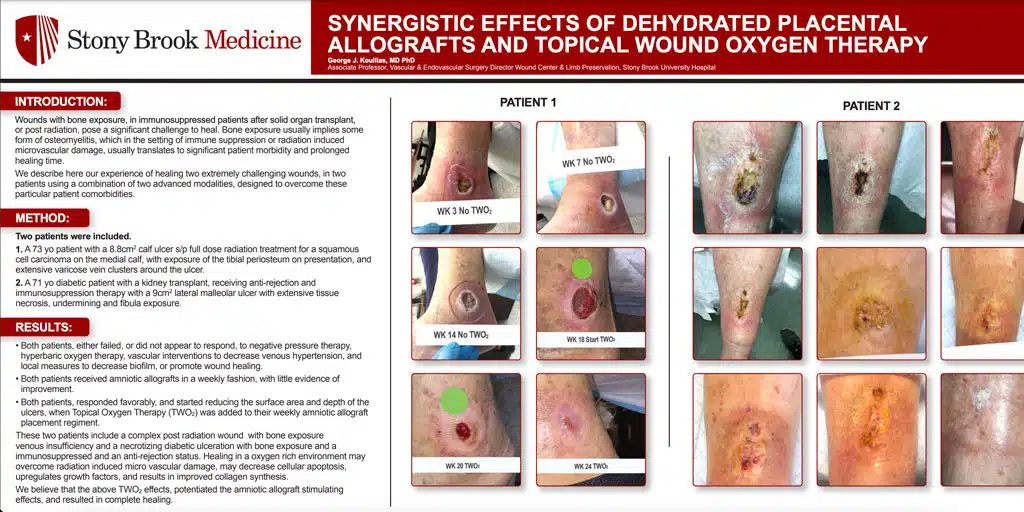SYNERGISTIC EFFECTS OF DEHYDRATED PLACENTAL ALLOGRAFTS AND TOPICAL WOUND OXYGEN THERAPY
George J. Koullias, MD PhD
Associate Professor, Vascular & Endovascular Surgery Director Wound Center & Limb Preservation, Stony Brook University Hospital
Introduction:
Wounds with bone exposure, in immunosuppressed patients after solid organ transplant, or post radiation, pose a significant challenge to heal. Bone exposure usually implies some form of osteomyelitis, which in the setting of immune suppression or radiation induced microvascular damage, usually translates to significant patient morbidity and prolonged healing time.
We describe here our experience of healing two extremely challenging wounds, in two patients using a combination of two advanced modalities, designed to overcome these particular patient comorbidities.
METHODS:
Two patients were included.
- A 73 yo patient with a 8cm2calf ulcer s/p full dose radiation treatment for a squamous cell carcinoma on the medial calf, with exposure of the tibial periosteum on presentation, and extensive varicose vein clusters around the ulcer.
- A 71 yo diabetic patient with a kidney transplant, receiving anti-rejection and immunosuppression therapy with a 9cm2lateral malleolar ulcer with extensive tissue necrosis, undermining and fibula exposure
RESULTS:
- Both patients, either failed, or did not appear to respond, to negative pressure therapy, hyperbaric oxygen therapy, vascular interventions to decrease venous hypertension, and local measures to decrease biofilm, or promote wound
- Both patients received amniotic allografts in a weekly fashion, with little evidence of
- Both patients, responded favorably, and started reducing the surface area and depth of the ulcers,when Topical Oxygen Therapy (TWO2) was added to their weekly amniotic allograft placement regiment.
These two patients include a complex post radiation wound with bone exposure venous insufficiency and a necrotizing diabetic ulceration with bone exposure and a immunosuppressed and an anti-rejection status. Healing in a oxygen rich environment may overcome radiation induced micro vascular damage, may decrease cellular apoptosis, upregulates growth factors, and results in improved collagen synthesis.
We believe that the above TWO2 effects, potentiated the amniotic allograft stimulating effects, and resulted in complete healing.
